Wet muddy foxholes rapidly became repositories for almost everything the combat company Marines usually carried on their backs. There was nothing to effectively hide or cover the holes with when they were abandoned, as they’d been there so long that both sides of the conflict knew their locations down to minute detail. There was little choice in leaving the gear behind, however. The only success the rapid maneuvering of the companies, and then their attack into the rear of the NVA regiment could possibly hope for, was based upon speed, a good bit of deception and then surprise.
I watched the three new lieutenants prepare for their first contact, none of the three appearing to show any fear or real trepidation. I wondered if they were made of sterner stuff than I was like I thought Captain Carruthers had been. They were wearing the new jungle utilities only recently issued, along with the lighter jungle boots that had special triangular metal pieces in their soles to avoid being injured by punji sticks. The boots and the utilities also, supposedly, dried a lot faster as well, not that it mattered much during the monsoon season when there was no such time, period or state known as dryness. I noted that the new utilities were a whole lot more noticeable against the jungle backdrop than the tattered remnants and dirt layered skin the other more seasoned Marines sported, like myself. The A Shau Valley would, however, tailor everything to its own design in almost no time at all. Mud, mosquitos, mosquito repellant, herbicides sprayed from the air, leeches, rain, and more mud would take their toll soon enough.

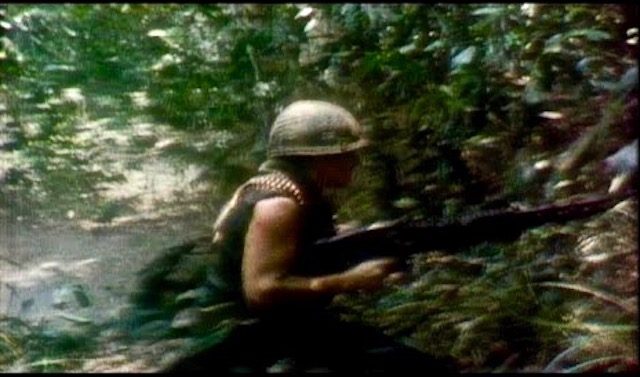
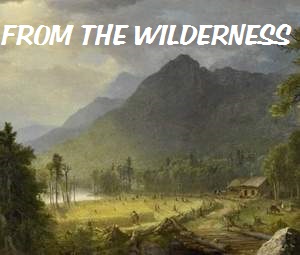



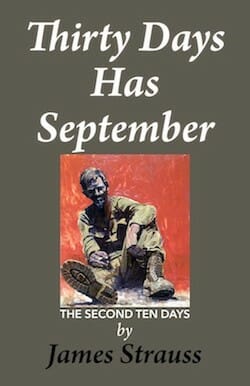

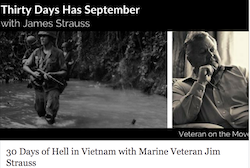





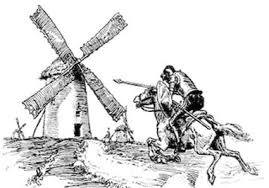

One more time my internet connection obliterated a longer note to you about what I have experienced in this last segment. The short of it was: pack of howling mad understrength Marine Rifle Companies chasing a NVA Regiment in the middle of a stormed soaked night. And you did a fine job of writing because it is completely belieavable though a work of self professed fiction. Yahoo
I guess we were pretty seasoned and tough down in that death valley of place. The Marines around me
were also a bit experienced in trying to deal with a situation where they had totally superior firepower
and supply while being totally outnumbered and also fighting on territory the enemy lived on and below.
Semper fi, brother Poppa…
Jim
James I can’t believe I’ve been following this gripping story for three years, seems like it’s only been 27 days. It’s a story worth telling and more important worth readying.
Wonderful comment Jimmy and I really appreciate the compliments so neatly expressed.
Semper fi,
Jim
I get the distinct impression that you and Gunny had a love/hate relationship going. I’m sure you know by now that he knew that if you couldn’t survive the first few days in combat he would continue to be the man in charge of what, by the time you arrived, were ‘his’ Marines. I hope you can appreciate that he had been unable to work with you in a training environment. That is where senior NCO’s get the opportunity to help ‘mold’ a young officer. I can see that he was trying to guide you by kicking you in the butt, making you make decisions even if he overrode them occasionally, and let you make your own rep with the Marines in the company.
In this segment I think when he was speaking with authority around the new officers he may have not been trying to be ‘in charge’ so much as trying to let the shave tails know that You were in charge, and he as the Gunny was backing you.
Officer development by NCO’s was something I grew up with and trained my subordinate NCO’s to do, during my 20 years of service. There is a fine line of training and insubordination in a non combat situation. I’m sure that in combat a good officer, especially a young one, would overlook that fine line and take the advice in whatever manner it may be delivered. You obviously did, you are writing about it. You were learning as you were surviving as well. And you were passing on your own lessons, as you attempted to help Captain Carruthers understand the situation, think, lead and survive.
I’ve been reading this account since the beginning and even though your Jr. NCO’s piss me off, Gunny is a lot like what I would liked to have been in that same situation. He was combat hardened, cared for his Marines and probably cared a lot about your survival, as well as his own.
Great writing. Looking forward to more of it.
Sometimes the depth of reading that some of the men and women do on here astounds me, and also goes into areas that I have to give more thought to.
I wrote the sequence between the Gunny and I, for example, without a thought that it might be the feature piece of the whole segment. It was not to
me as I wrote it and I depend upon you here to let me know. I am surprised a lot, by the way. There was not time or conditions for deep contemplative
thought while I was in it, by the way, so it is really interesting to read it here, by some considerable intellects such as yourself. Thank you most
sincerely…
Semper fi,
Jim
Sir again a very riveting chapter, and reminds me of a book I read while at hospital corps school 83, The Dark Green Valley, was that your AO
Yes, earlier the valley was referred to as the dark green valley because of the deep green growth
up at the tops of the canyon walls and the matted dark green jungle that covered its bottom.
Semper fi, and thanks for the compliment.
Jim
Hey, Strauss,
Yes, I’m still here, as from the very beginning when the steel door slammed down. I’m just a lot farther back in the column now as befits my NIC (Never in country) status. I marvel at the number of shot up, shot at, still suffering, still scared, and physically and mentally scarred Vets this book of yours has flushed from the undergrowth of boxed up memories. I think we’ll both admit there just a smattering of them at first, not really believing, or wanting to believe that you were the “real deal”. Reading the comments has always been an integral part of the book, but the level of investment by these readers has crescendo-ed as the end of the thirty days draws near. You have selected some excellent posts by several of these guys to drill down to the gut level of the rank and file readership.
And now, finally here near the end, I have found my own character! I am Lieutenant No Name! Without doubt, I would have been the scared-est, dumbest, brown bar ever to stumble into a war zone. I can just hear my unspoken but screaming-inside-my-head muttering of disbelief: “But, I’m an Engineer! I don’t know shit about whatever it is that’s going on here!” I”m hot sure how I’m going to handle it now when I found out how I died.
Write on,
Semper Fi,
John Conway, Lt No Name
And hence your comment is up on the Facebook pages, because of you and the content and the care you bring to this page and this effort.
Semper fi,
My friend,
Jim
Thanks for another great read Sir.
Much appreciate the compliment and the support you lend by writing it on here.
Semper fi,
Jim
“Some of those enlisted men men will be dying for you tonight. In the future you might want to refer to them as Marines ,now shut up .” I have never seen a better couple of sentences .
Thank you Michael. I wasn’t thinking when I wrote that section of the segment, I was just running on rote memory of how things were.
Much appreciate the strength of your compliment, however…
Semper fi,
Jim
Jergens is still fighting for himself and his marine’s but he knows he owes you. Sometimes you just need to work with the devil.
Yes, Jurgens was all of the devil kind of thing, but then the situation we were in was a whole lot closer to hell than heaven,
or even purgatory! Thanks for the great comment.
Semper fi,
Jim
Really can’t add to the numerous comments regarding the work James. You just keep coming up with outstanding narration of your story and the story of the young Marines you were commanding. BZ Sir!
Thanks for making the attempt here Chuck. Your presence is noted and that helps, no matter what you do or do not add. Your compliment is most welcome.
Semper fi,
Jim
I’m mirroring Chuck’s comments. Have been with you since the beginning of this oddessy. Anything I’d add would be redundant.
Semper Fi James!
Thanks Tom, Chuck is a great man to allow to lead…
Semper fi,
Jim
Combat Teaches u by killing you… nicely put Lt.
MEarly
It is a brutal saying but it is also brutally true.
Thanks for the comment M…
Semper fi,
Jim
Hey Lt. just finished reading the last two chapters of this saga of your’s. While I, as do most of your readers, marvel at your ability to relate what you and your men struggle through, I find myself still intrigued with the relationship between you and the Gunny. Am I wrong in sensing a slight shift in that coming to the fore? Truly find myself completely engrossed in the events at hand and am still learning about and from them. Take care Lt.
The relationship I had with the Gunny evolved, as you have noticed, and I was hard put to
ever figure out where he really was with me and with the Marines. He had no real friends in the
company and took no one into his personal life, including me. Thanks for asking and thanks for commenting on here.
Semper fi,
Jim
James, you have kept your audience so captivated with the detail of your writing, that we all feel right there with you.
The cave, the leeches, the drums, the Skyraiders, the smell of the mud, all stimulate our senses as we read your first hand account.
Also, we all know one constant about your story – you survived to tell it. Besides that, we don’t know how the rest of your Marines make it through the last few days of September. Even though this happened many years ago, I’m still praying that you all made it out alive.
In a world that idolizes people for their abilities, you found a way to keep men alive. I am not a Vet, but I would like to give you a very heart felt SALUTE! 🇺🇸
No one is more sorry than I that, no, we did not all make it out of the valley, which most have figured out by now.
Thanks for the salute and I return it stiffly and formally but with warm friendship.
Semper fi,
Jim
LT,
The elements, Mud, more mud, hills, more hills, jungle, more jungle, Monsoon season and all the misery that goes with it,,,,in addition to some folks trying to kill you or you kill them,,,War is nasty, dirty, mean, and never predicable.
Love this book you are writing.
Night work is not easy nor looked forward to but sometimes stuff happens and you do what you have to do.
Bring it LT!
Chris Culifer
Thanks for the encouragement and the compliments Chris, sa it keeps me going on this wet and muddy morning here
Semper fi,
Jim
Sitting on our back porch now as the bands from Dorian come rolling in brings perspective to the plight. Trying to describe the insistent rain and mud to others is difficult for them to grasp. Much less peering into the dark looking for movement ahead. Once again thanks for sharing yours and others experience during this time.
Funny how the association with disaster brings back combat memories. That happened to me on 9/11, the night after.
Anyway, I hope all goes well for you with the hurricane that refuses to come ashore, which is great news, in spite of
the wind and rain. Thanks for taking the time to read my books during the wait…
Semper fi,
Jim
Excellent is the only word I have. Thanks for your efforts in writing this down and I do hope it helps with the emotions. It has for me.
Thanks Eric. Yes, indeed, it is therapeutic for me too, well, most of it anyway.
Some is harder than others….thanks for caring and writing about it on here…
Semper fi,
Jim
Thanks Jim, for your hard work getting each chapter out, and for your dedication “back in the day”!
You are most welcome Joseph. I am working away at it to the best of my ability, and with the help of
the men and women writing away on here to give support and great compliments.
Thanks!
Semper fi,
Jim
“Only” four weeks in the valley but look at how much you’ve changed voluntarly or not as you note the lack of awareness of the real situation in the three FNG LTs., and reflect on that !!!
Also noted the remark from the Gunny about the loss of previous officers. Hmmm..?? !!
Thanks for pounding out another captivating chapter is so short a period of time Jim.
SEMPER fi
Thanks Sgt. I don’t much notice the change although I feel it inside me, as this works to the end.
Thanks for pointing that out and also for the compliments in your comment.
Semper fi,
Jim
Another great chapter. As I read I get confused about your locations to the enemy and plan of attack. You said the ontos was on your right. That’s when I knew I was confused. When you get this final book in print maybe you could help guys like me by adding some basic diagrams of your movements along the river. I get confused. My confusing has nothing to do with your wry. It’s me and trying to follow the excitement of the action you present so we’ll. But I’m I simple guy who’d benefit from a basic drawing of you movement along the river. Thanks Keep them coming.
When we turned back north to come up behind where we thought the enemy was, that put the Ontos on my right over by the river,
headed back north on our western flank. thanks for following and trying to figure it all out…
Semper fi,
Jim
Another great read James…I had to stop and catch my breath from running through the jungle with you…you do know how to put us right there in the middle of it all…thanks for the quick turnaround…I still fear Hill 975…and what will be there…
Yes, Hill 975 seemed to be the middle of everything down at that end of the valley. Thanks for the compliment in your words, as well…
Semper fi,
Jim
My old combat eye see’s what your story is telling us. Your voice is in all of our heads and hearts. Stay strong these next few chapters.
I am on it Marlin, working away to get one segment out after another now.
Thanks for the support and the care…
Semper fi,
Jim
Thanks for another great chapter, James.
I’m glad the other guys here help you edit: I appear to be useless at detecting the errors. I am so intensely involved in your story I read only what you meant to write. Typos, punctuation errors, whatever—none of that stuff appears to me! In fact, I am dumbfounded when I read the comments I didn’t notice these things. I am normally picky! When I read your work, I am totally in another world where that stuff just doesn’t matter. Only great writing can do that.
I also go into another world in the writing. I am there on the other screen right now and I had to pull out as I was in too deep. The end of the third part of the first of the story
is near and it draws me. Thanks for the great comment and I also miss the edits.
I re-read and I swear its clean copy and then a DanC comes along and nails five or ten obvious errors!
Say what?
Semper fi,
Jim
LT you have me feeling wet, muddy and out of breath right with you, as always!
Thanks Mike S, you have been along for quite some time. I am happy that the story and the writing still ‘holds’ on to you.
Hard for the real deal guys not to be drawn in and react, I know.
Semper fi, my old friend,
Jim
I’ve read the comments and appears all corrections have been addressed.
Another great on-the-edge-of-my-seat read James! As usual, you write with searing clarity of Junior’s physical and mental condition and the elements he’s forced to endure.
I’m exhausted. And having read this installment right after the latest chapter of Yakuza, I’m gonna need a drink! I will avoid the temptation when/if any future notice containing new chapters of both novels to read both in the same day!
You have me hooked
Thanks,
Jim
Hey Jim, thanks for the great comment. Yes, I race back and forth between the two novels
and it is quite something. Yakuza has more fiction in it so it is more difficult to conceptualize
while 30 days is more difficult emotionally….
Semper fi,
Jim
Great again!
Thanks H. Kemp. You are not an easy audience either, I know. High compliment from you!
Semper fi,
Jim
James, this is one book that needs to be a movie so others can feel and see what we did over there.
Awaiting your next posting!
Bob U.
I don’t think Hollywood will ever touch this.
Too raw, too racial, too violent and too real especially all the stuff about friendly fire.
But thanks, I know you meant that as a deeply sincere compliment…
and also, I don’t think the military would lend any of its equipment to the movie effort!!!
Semper fi,
Jim
Skip Hellywird, Mel Gibson?
I think Mel made his signature Vietnam movie already and also, you don’t just contact those people.
There is no way to reach Mel at all, unless someone was really close to him and brought it to his attention,
which isn’t likely. The stars don’t want new stuff put in front of them almost at all…just the way it is…
Thanks for the good thoughts though,
Semper fi,
Jim
“Jurgens”, I said… fire only forward because (we’re) not going….
…but had not drawn it from its (holster).
You are putting a real page-turner together!
Floyd (91B4P)
Thanks, Floyd.
Noted and corrected.
Semper fi,
Jim
Now I have another reason to not want September to end.
Thank you, Sir, for another intense chapter.
Great way to phrase a great compliment Paul and you have my deep thanks…
Semper fi,
Jim
I think this would make a great movie
Thanks Kevin, but it’s not likely. Hollywood is not quite that controversial and the
military would not be likely to lend any equipment to the effort…
Appreciate that though…
Semper fi,
Jim
I look forward to each new installment, and plan to purchase the book so I can read it all again from beginning to end
They will be posted soon. Plan to have Third Ten Days completed this month.
You know First two Books are available. Autographed Paperback and eBook.
Special price first two with a discount on Third when published.
Books One and Two, Thirty days Has September
Yes sir I just ordered the first two. I’m a big history buff and have read everything I can get my hands on (non fiction) about Vietnam and nothing has kept me hanging on every word the way your story has. Thank you for your service and sharing your experience.
You are most welcome Kevin and I appreciate the depth of your compliment.
Semper fi,
Jim
Another ”drop everything until you’ve read it” segment.
Neat thing to say,
Gary, and I thank you most sincerely for that compliment…
Semper fi,
Jim
As usual, Jim, you command an audience of veterans that relive everything through your words and emotions. I know, as I am enthralled the whole time I’m reading. The smell, the rain, the sweat, my eyes closing because I’m so damn tired of running, the sound of the hot rounds falling out of the sky nearby. Being scared but functioning. Wanting to scream but cannot.
Keep up the good work my friend.
Thanks so much, Jim. It is good to get the reports of vets like you.
I’m never sure. I’ve never sure where the heck the detail is going to surface in the story.
I’m only certain of the direction the story is going because I have never forgotten.
Thanks for the great comment on this night as I write away, not in the mud, rain and no leeches…
Semper fi,
Jim
Ah, this time I was lucky enough that DanC and others have already given you the edits – much easier reading!
Really like the way that you bring us into the scene. I have felt that heavy tropical rain many times, and you have effectively brought us into the deluge.
And thank Heaven for Ngyuen. I have a hunch he could help pull you through the River Styx if necessary.
Semper fi, my friend.
Yes, Nguyen was something else, indeed. Thanks for the thoughts and compliments.
Much appreciate the late night life on this side of things…
Semper fi,
Jim
Jim, what attracted me to your story in the beginning was the absolute gut wrenching way you pulled me into the story and made me believe I was right there with you through every step. The details laid down and the feeling that I was right there struggling with you and the rest of the company was part exhilarating and part down right scary.
As the chapters flowed I became somewhat used to the constant action and fear, however, these last few chapters have slammed that fear back into my gut with a vengeance. I have latched on to the new officers, and their fears and emotions have multiplied what I felt before.
You have taken a place in my psyche next to the great protagonists in literature I have revered.
Magnificent.
Terrific comment and series of compliments Rob. I put this comment up on my site, it was just too magnificent to pass by without notice.
I hope to live up to your expectations as this proceeds toward the end of the beginning of the rest of my uncommon life…
Semper fi,
Jim
As usual, another segment that makes me, a non-military female, feel like I’m there. And makes me realize what old friends who were there might have experienced. When they are all done, I will be ordering a set, hopefully autographed. Many, many kudos to you for persevering through the writing.
Having any female readers at all is something when writing such a male participated expose of combat.
Women are involved now but I’m not sure how that is working out in Afghanistan.
It would have been pretty tough in the Nam where I was,
but then it was pretty tough for all of us there.
Thanks for wanting the set. Hope to be done soon…
Semper fi,
Jim
Pleased to see a pre lunch new segment. Hope there is another one before lights out!
Semper Fi!
Well, I’m not that fast William, although I am at work at it.
Thanks for the encouragement and the support in your iron words…
Semper fi,
Jim
BRILLIANT!
What a great one word compliment Alan. Much appreciate and helps keep me going…
Semper fi,
Jim
Your best chapter yet James, I feeling like I am right there with you and your men and I can almost smell Gunnys cigarette. Great move putting the new lt’s with Jurgens.
Best chapter yet. I have read that one many times and I smile each time.
Significant compliments, all of them, including this one from you and I thank you most kindly.
Thanks for the atta boy….
Semper fi,
Jim
You still got us Lt, hanging on your every word, waiting for the next sentence……
Thanks Bob, much appreciate the comment and the compliment…
Semper fi,
Jim
Jim, Again you have us on your right shoulder & hunched over, trying to push through our imaginary rain, trying to ‘feel’ as much as we can. Thank you, Doug
Thanks Doug, and I write on into this Labor Day with my deadline in sight…so to speak.
Appreciate the support and the comment about it on here…
Semper fi,
Jim
Agree with your very first commentator on this segment, you have us again, waiting for anything, a word, a sentence. But we were given a hint that your powerful M60s were first to make contact. Now I also hope I am not going to hear bad news about your new LT Corp and that their first combat hasn’t taken more lives or limbs. Just had a thought that seems so long ago in this telling remembering an off balance Capt taking on a tank. These volumes when finished will be read many times over as your readers can’t retain all that is contained in the volumes. Thx LT. Poppa J
Thanks Poppa J, you write pretty damned well yourself in laying out where we’ve been and how difficult it might be to carry the whole 12 hundred pages this
odyssey will eventually be. Never expected that. Didn’t think I had that much to say about it. But the story just pours out, almost all on its own.
Semper fi, my friend,
Jim
Now you have me wondering how much space thoughts not uttered but held closely can occupy. Oh well, now we can wonder aloud how much time Ezekiel Elliott will take to transfer $65,000,000 of new found wealth to somebody else’s pocket. Cause nobody has enough personal space to hide from view that many tangible dollars. Now that guy has a real problem, poor fella. Poppa
No idea what you are writing about here Poppa….
Semper fi,
Jim
Not to worry on my second comment. Some data mess up because your response came as a series of letters on the right margin. Back to watching the storm. P.J.
thanks for the explanation Poppa…
Semper fi,
Jim
Funny
Yes, you are!
Semper fi,
Jim
What a baptism of fire for the 3 new LT’s.
The A Shau at that time was both an immediate baptism and then a quick funeral for so many…
Combat teaches you by killing you…
Semper fi,
Jim
You are one hell of a story teller.
Thanks Rick, for helping keep me going as I write the next segment on this Labor Day…
Semper fi,
Jim
Damn LT you haven’t been there a month and to us it feels like a lifetime.
I come and go a bit, depending upon the emotions and the stuff going on in my own life.
But this is a good period so another segment went up this day and I am writing another as I write you…
Semper fi,
Jim
Only those who have been in combat in deep jungle warfare can truly understand what these marines went through , and their story is told in detail , and with personal feelings . This combination makes you feel as if you are making the struggle together . I have been there , and now Mr Strauss has taken everyone who reads his books ,to there as well . Awesome job he has done .
It was a strange special tribe of the time, those of us down in that valley and inside the misery of that jungle and mud.
I explain it as best I can but it’s hard to truly capture the complexity of it all and the stuff we were constantly bombarded by
and up against.
Semper fi, and thanks for the great compliment at the end of your comment…
Semper fi,
Jim
I have read at least 4 books written by Vietnam vets, none of which have gripped me and shook me to the core as your writing has. I can literally feel the rain relentlessly dripping from my helmet and poncho, leeches and mud all over my body, and the never ending fear..especially at night. Your story is both terrifying, yet magnificent. I am so looking forward to the conclusion of the nightmare that this had to be, and dreading it too..O will will sorely miss your writing…US Army 69-72
I can’t thank you enough for that terrific comment.
The complimentary depth of your critique is stunning to me.
I have little thought about the effect of what I write when I am writing the story.
Only after, and after comments like your own, can I really reflect.
What a great reflection you give me. I cannot thank you enough…
Semper fi,
Jim
Mind blowing and riveting! Unbelievable!
Thanks Dick, your compliment helps me along on this fine Labor Day morning…
Semper fi,
Jim
The fog of war. Now heavy contact. Ouch! Riveting narrative. I am glad when each installment is published… but always at your own pace. However long it takes. Stay in your comfort zone.
“The A Shau Valley would, however, tailor everything to its own design in almost no time at all.”
What a great line!
Question: Where is the Starlight Scope at the end of this segment?
Some editing suggestions follow:
their radio operators redistributed by the Gunny to Jurgens and Sugar Daddy platoon squad leaders
Maybe possessive for Jurgens and Sugar Daddy
their radio operators redistributed by the Gunny to Jurgens’ and Sugar Daddy’s platoon squad leaders
Yes, we used the on patrols in Virginia
Maybe change “the” to “them”
Yes, we used them on patrols in Virginia
Fusner, the Gunny and Jurgens, squatting down as best I could in the much and rain.
Maybe “muck” for “much”
Fusner, the Gunny and Jurgens, squatting down as best I could in the muck and rain.
“Fusner?” he whispered, crawling back toward the lip of the berm
Add a period
“Fusner?” he whispered, crawling back toward the lip of the berm.
Hill 974
Hill 975
“Jurgens,” I said the, partially to change the subject
Drop the “the”
“Jurgens,” I said, partially to change the subject
MacInerney had somehow guessed the situation, with respect to
/blank line/
Jurgens lack of loyalty to me or the plan
Just backspace to fill the blank line
MacInerney had somehow guessed the situation, with respect to Jurgens lack of loyalty to me or the plan
I thought of Macho Man, and how I knew what had had to have happened
Extra “had”
I thought of Macho Man, and how I knew what had to have happened
Everyone’s tired and we’ve to three clicks to move south
Maybe
Everyone’s tired and we’ve to move three clicks south
We push all the way to stream that runs out into the Bong Song at the base of Hill 975
Maybe add “the” in front of “stream”
We push all the way to the stream that runs out into the Bong Song at the base of Hill 975
Fusner handed me radio handset when I was done talking
Maybe add “the” in front of “radio”
Fusner handed me the radio handset when I was done talking
“What does parallel to its position mean?” Fusner asked, standing by his side.
Not sure what “standing by his side” means?
Maybe
“What does parallel to its position mean?” Fusner asked, standing by my side.
The presences of those six barrels pointing right at the enemy
Maybe drop the final “s” from presences
The presence of those six barrels pointing right at the enemy
Hope this helps.
Blessings & Be Well
I think we corrected them all, Dan.
You have no idea how much your support and from others helps on this journey.
Semper fi,
Jim
Dan C, it helps no end. The changes are being made right this minute and I cannot thank you, or the others who perform similar functions on here.
My online editors. Whom would have thought? Much less all those along with me, riding along on the odyssey.
Semper fi, and huge thanks,
Jim
I think, when you grow up as a combat marine ‘ s kid…it takes a while to understand. what it is that seems to make your parent entirely different than most other dads. Then you happen to witness some guy make a mistake in his presence, and you know. You know some guy has not only made a mistake but also that same some guy will end up paying for that mistake. In ways you don’t always get to see. You know difference comes about because the marine was trained not only to take what comes their way for a mistake, yet also to be prepared to immediately disburse the lesson to be learned.
I’ve been able to reconcile this difference quite a bit since reading TDHS. Maybe for the realization that service might make us all brothers, but combat makes every brother a parent, as well. What does any of this have to do with the Twenty-seventh night?
Junior would do the same thing every other marine in his position would do…absolutely the best he could with what he had!!
For this reader, this kid to a marine combat veteran…it will never be less than enough, and…with a little grace, just a bit more than expected!
Thanks for lightening the load for the whole family, Lieutenant…to this day!
Semper fi
ddh
I put your comment up on my Facebook sites. So, as usual, insightful and complimentary and from someone who knows.
You are a great talent all of your own my friend and I much enjoy reading your writing…
and a great thank you too…
Semper fi,
Jim
That was fast writing. But you leave us hanging as is normal .
I just write on and stop when I feel it’s appropriate to begin the next segment Harold.
Thanks for putting up with the ‘cliffhanger’ nature of it all but I don’t know how else to write it.
Semper fi,
Jim
Fantastic again James, thanks for the posting.
Editorial notes:
4th paragraph down, “Hutzler” should be “Hultzer”:
…with “Hutzler” buttoned…
6th paragraph down: “the” should be “them”
…Yes, we used “the” on patrols…
7th paragraph down” “Hutzler should be “Hultzer:
…somewhat lying, as “Hutzler” was capable…
8th paragraph down “Huntzler” should be “Hultzer:
…although I knew “Huntzler” would be applying …
Midway down, unnecessary break in the line with a line space in what should be a continuous sentence:
“Lieutenant MacInerney will accompany you on his first combat patrol,” I said, understanding that MacInerney had somehow guessed the situation, with respect to (no break or line here)
Jurgens lack of loyalty to me or the plan, and was willing to do what he could to
Further down, missing the word “got and delete the word “to”:
“Let’s move out,” I ordered, coming to my feet with difficulty. “Everyone’s tired and we’ve (add word “got” and delete the word “to”) three clicks to move south through heavy jungle, and then encounter the NVA if we’re lucky.
Same Para, 3 lines down add the word “the”:
…to (the) stream that runs…
Paragraph below that one add the word “the”:
Fusner handed me (the) radio handset when I…
16 paragraph from the bottom change “Hutzler” to “Hultzer”:
…Hutzler and Sugar Daddy wouldn’t really…
2nd paragraph from the bottom the word “if” should be “it”:
If felt good to keep moving…
Take care, eagerly awaiting the next posting!
Chris S.
Thank you and others so much, Chris.
I pounded this out late and probably typing too fast.
Your suggestions are corrected.
Semper fi
Jim
Another riveting chapter. Every sentence keeps me on the edge anticipating what you have woven into this segment of the story.
It’s a bigger and longer story than I ever thought it would be when I started.
Thanks for appreciating that and sticking with me through all of it.
Semper fi,
Jim